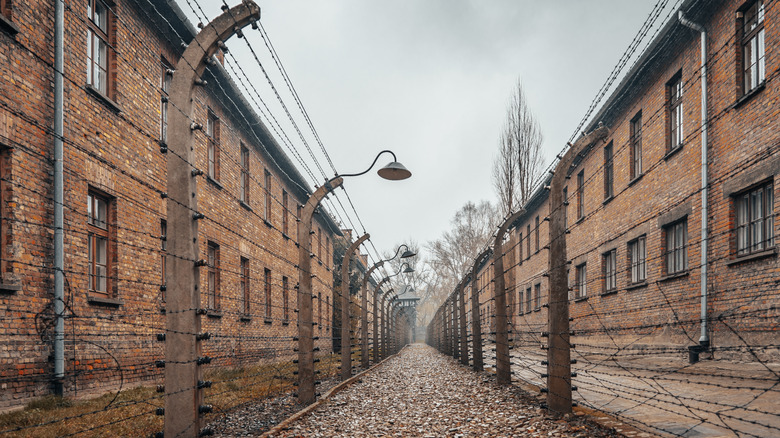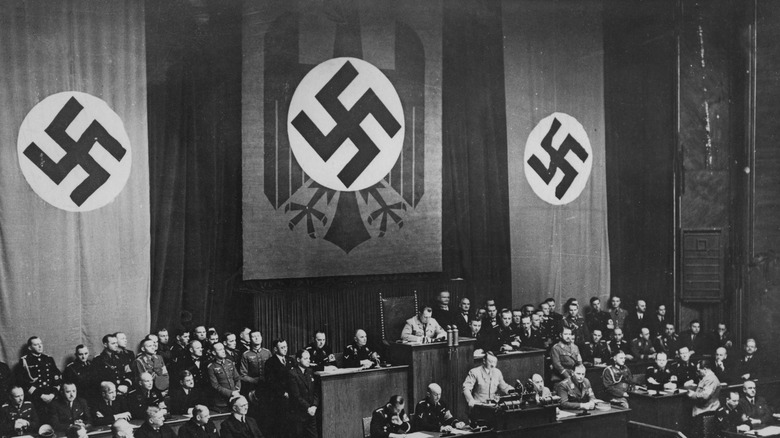The Big Lie About The Holocaust You Learned In History Class
Although the Nazi regime primarily targeted Jews in their Final Solution, history often forgets the other victims of the Holocaust. Adolf Hitler's death camps were also filled with civilians of all religions, ethnic backgrounds, sexual preferences, and abilities (via All That's Interesting). Five million is often cited as the number of non-Jews killed by the Nazis. However, according to the Jewish Virtual Library, this number is incredibly inaccurate. No more than half a million non-Jews were killed in concentration camps, and as many as 35 million were killed throughout the war. By the 1950s, the term Holocaust came to exclusively reference the genocide of Jews by the Nazi regime, and the other half was seemingly forgotten.
On September 1, 1939, Hitler invaded Poland, starting World War II. According to History, he immediately got to work on the construction of concentration camps and began terrorizing and murdering human beings — both Jewish and non-Jewish.
Why did Hitler kill non-Jews?
Nazi ideology thrived off traditional prejudices and eugenics. They also feared any political or religious opponents (via the Holocaust Encyclopedia). When Adolf Hitler came into power in 1933, Germany had long been suffering economically and otherwise. As chancellor, he promised the restoration of Germany as a world power (via the Jewish Virtual Library). Furthermore, Hitler envisioned a master Aryan race that would control all of Europe, and eventually, the world. In order for the people to believe in this vision, Hitler became a master of propaganda. He convinced the German people that all they needed to do was eliminate the common enemy — those who were racially inferior and those who simply didn't believe in his message.
Soon, the Jews were sent to ghettos, and the non-Jews deemed as inferior or uncompliant were tyrannized in their own homes. For example, some Jehovah's Witnesses who refused to swear an oath to the Nazi regime were sent to concentration camps. Due to the belief that the Roma were racially inferior, they too lost a massive amount of their population. Members of the resistance — often young adults or children — were murdered for taking a stance against the Nazis. The disabled, who Hitler considered a biological and financial threat, were also systematically murdered.
Of course, there were several other groups that were targeted for various reasons. Millions were persecuted and died at the hands of the Nazis. And although policies against each and every one of these groups differed, the end goal was the same.

